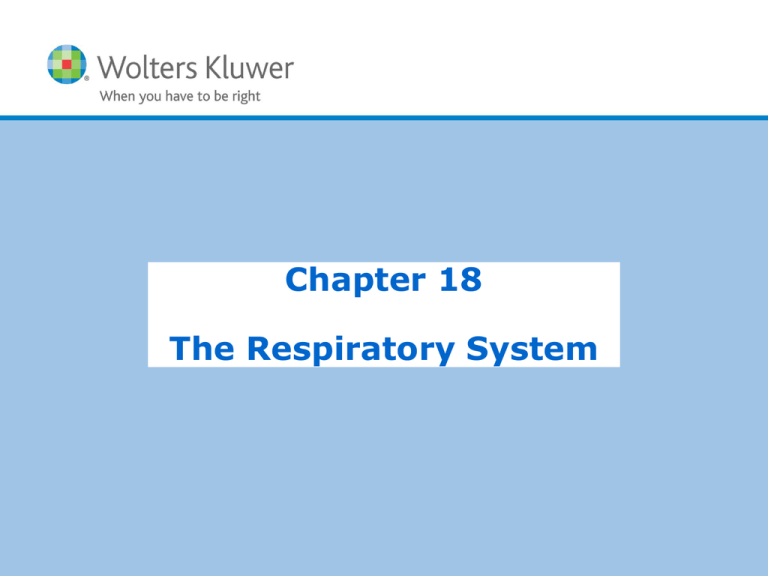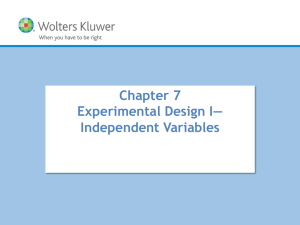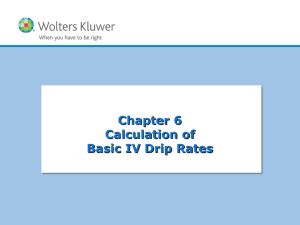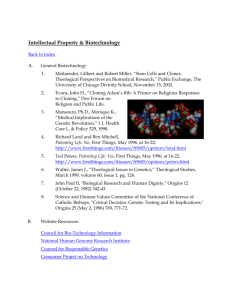
Chapter 18
The Respiratory System
Copyright © 2015 Wolters Kluwer Health | Lippincott Williams & Wilkins
Key Terms
alveoli (sing., alveolus)
diaphragm
pharynx
asthma
dyspnea
phrenic nerve
bicarbonate ion
emphysema
pleura
bronchiole
epiglottis
pneumothorax
bronchus (pl., bronchi)
epistaxis
pulmonary ventilation
carbonic acid
hypercapnia
respiration
carbonic anhydrase
hypoxia
spirometer
chemoreceptor
larynx
surfactant
compliance
lung
trachea
Copyright © 2015 Wolters Kluwer • All Rights Reserved
Phases of Respiration
Respiration
• Process of obtaining oxygen from environment and
delivering it to cells
Phases of Respiration
1. Pulmonary ventilation
2. External gas exchange
3. Gas transport in the blood
4. Internal gas exchange
Copyright © 2015 Wolters Kluwer • All Rights Reserved
Structure of the Respiratory System (cont.)
• Conducts air into and through the lungs
• Main components
– Nasal cavities
– Pharynx
– Larynx
– Trachea
– Bronchi
– Lungs
– Pleura
What organ is located in the
medial depression of the
left lung?
Copyright © 2015 Wolters Kluwer • All Rights Reserved
Structure of the Respiratory System (cont.)
The Nasal Cavities
• Nostrils (nares)
• Nasal cavities
– Mucous membrane
• Filters foreign bodies
• Warms air
• Moistens air
– Conchae
• Nasal septum
• Sinuses
Copyright © 2015 Wolters Kluwer • All Rights Reserved
Structure of the Respiratory System (cont.)
The Pharynx
• Carries air to the respiratory tract and food to the
digestive system
– Nasopharynx
• Superior portion
– Oropharynx
• Middle portion
– Laryngeal pharynx
• Inferior portion
Copyright © 2015 Wolters Kluwer • All Rights Reserved
Structure of the Respiratory System (cont.)
The Larynx
• Located between the pharynx and trachea
– Cartilage framework
• Thyroid cartilage (Adam’s apple)
– Vocal folds (vocal cords)
• Used for speech
– Glottis
– Epiglottis
Copyright © 2015 Wolters Kluwer • All Rights Reserved
Figure 18-3 The larynx.
Copyright © 2015 Wolters Kluwer • All Rights Reserved
Figure 18-4 Vocal folds, superior view..
What cartilage is named for its position above the glottis?
Copyright © 2015 Wolters Kluwer • All Rights Reserved
Structure of the Respiratory System (cont.)
The Trachea
• Conducts air between the larynx and lungs
• Framework of separate cartilages
– Horseshoe shaped
– Open at back for expansion of trachea during
swallowing
Copyright © 2015 Wolters Kluwer • All Rights Reserved
Structure of the Respiratory System (cont.)
Pop Quiz
18.1
What is the most superior portion of the pharynx?
A) Laryngeal pharynx
B) Septum
C) Nasopharynx
D) Oropharynx
Copyright © 2015 Wolters Kluwer • All Rights Reserved
Structure of the Respiratory System (cont.)
Pop Quiz Answer
18.1
What is the most superior portion of the pharynx?
A) Laryngeal pharynx
B) Septum
C) Nasopharynx
D) Oropharynx
Copyright © 2015 Wolters Kluwer • All Rights Reserved
Structure of the Respiratory System (cont.)
The Bronchi
• Trachea divides into two primary bronchi that enter the
lungs:
– Hilum
– Epithelial tissue lining
• Pseudostratified with cilia
Copyright © 2015 Wolters Kluwer • All Rights Reserved
Structure of the Respiratory System (cont.)
The Lungs
Located on either side of mediastinum in the thoracic
cavity
• Alveoli
• Lobes
– Right lung has three lobes.
– Left lung has two lobes.
• Bronchial tree
• Bronchioles
Copyright © 2015 Wolters Kluwer • All Rights Reserved
Figure 18-5 The lungs.
Copyright © 2015 Wolters Kluwer • All Rights Reserved
Structure of the Respiratory System (cont.)
Lung Cavities and the Pleurae
• Diaphragm
• Pleura—continuous double sac covers the lung
– Parietal pleura
– Visceral pleura
– Pleural space
Copyright © 2015 Wolters Kluwer • All Rights Reserved
Structure of the Respiratory System (cont.)
Pop Quiz
18.2
Where is the pleural space located?
A) Between neighboring alveoli
B) Between the layers of the membrane covering
the lungs
C) Between the ribs
D) In the nasal cavity
Copyright © 2015 Wolters Kluwer • All Rights Reserved
Structure of the Respiratory System (cont.)
Pop Quiz Answer
18.2
Where is the pleural space located?
A) Between neighboring alveoli
B) Between the layers of the membrane covering
the lungs
C) Between the ribs
D) In the nasal cavity
Copyright © 2015 Wolters Kluwer • All Rights Reserved
The Process of Respiration (cont.)
• Ventilation of lungs
• Exchange of gases
• Transport of gases in blood
Copyright © 2015 Wolters Kluwer • All Rights Reserved
The Process of Respiration (cont.)
Pulmonary Ventilation
• Inhalation (inspiration) is active phase.
– Diaphragm contracts and flattens.
– Surfactant
– Compliance
• Exhalation (expiration) is passive phase.
– Respiratory muscles relax.
• Spirometry:
– Records volumes of air inhaled and exhaled
Copyright © 2015 Wolters Kluwer • All Rights Reserved
The Process of Respiration (cont.)
Pulmonary Ventilation (cont.)
• Lung volumes
– Tidal volume
– Residual volume
– Inspiratory reserve volume
– Expiratory reserve volume
• Lung capacities
– Vital capacity
– Functional residual capacity
Copyright © 2015 Wolters Kluwer • All Rights Reserved
Copyright © 2015 Wolters Kluwer • All Rights Reserved
Figure 18-6 Pulmonary ventilation.
What muscles are located between the ribs?
Copyright © 2015 Wolters Kluwer • All Rights Reserved
Figure 18-7 The relationship of gas pressure to volume.
What happens to gas pressure as the volume of its
container increases?
Copyright © 2015 Wolters Kluwer • All Rights Reserved
The Process of Respiration (cont.)
Gas Exchange
• Requires a pressure gradient
• External exchange—between lung alveoli and capillary
blood
– Oxygen leaves alveoli and enters capillaries.
– Carbon dioxide leaves capillaries and enters alveoli.
• Internal exchange—between blood and tissues
– Oxygen leaves capillaries and enters tissue.
– Carbon dioxide leaves tissue and enters capillaries.
Copyright © 2015 Wolters Kluwer • All Rights Reserved
The Process of Respiration (cont.)
Transport of Oxygen
• Most oxygen, 98.5%, is transported in blood by
hemoglobin.
Transport of Carbon Dioxide
• 10% is dissolved in plasma and fluid in red blood cells.
• 15% is combined with protein of hemoglobin and
plasma proteins.
• 75% dissolves in blood fluids and is converted to
bicarbonate ion.
Copyright © 2015 Wolters Kluwer • All Rights Reserved
Figure 18-8 A spirogram.
What lung volume cannot be measured with a spirometer?
Which lung capacities cannot be measured with a
spirometer?
Copyright © 2015 Wolters Kluwer • All Rights Reserved
Figure 18-9 Gas exchange.
Copyright © 2015 Wolters Kluwer • All Rights Reserved
Copyright © 2015 Wolters Kluwer • All Rights Reserved
The Process of Respiration (cont.)
Pop Quiz
18.3
Which of the following describes what occurs in the
lungs?
A) Both oxygen and carbon dioxide diffuse from the
blood into the alveoli.
B) Oxygen diffuses into the blood and carbon
dioxide diffuses into the alveoli.
C) Carbon dioxide diffuses into the blood and
oxygen diffuses into the alveoli.
D) Both oxygen and carbon dioxide diffuse from the
alveoli into the blood.
Copyright © 2015 Wolters Kluwer • All Rights Reserved
The Process of Respiration (cont.)
Pop Quiz Answer
18.3
Which of the following describes what occurs in the
lungs?
A) Both oxygen and carbon dioxide diffuse from the
blood into the alveoi.
B) Oxygen diffuses into the blood and carbon
dioxide diffuses into the alveoli.
C) Carbon dioxide diffuses into the blood and
oxygen diffuses into the alveoli.
D) Both oxygen and carbon dioxide diffuse from the
alveoli into the blood.
Copyright © 2015 Wolters Kluwer • All Rights Reserved
Regulation of Respiration (cont.)
• Complex process regulated by changes in cellular
oxygen demands and carbon dioxide production
• Controlled by central nervous system centers
– Partly in medulla (main control center), partly in pons
(modifies patterns set in the medulla)
•
Fundamental respiratory patterns controlled by the
central nervous system
Copyright © 2015 Wolters Kluwer • All Rights Reserved
Regulation of Respiration (cont.)
Central Nervous
Control
• Control center is located
in the medulla (sets basic
pattern of respiration)
and pons of the brain
stem.
• Motor nerve fibers extend
into the spinal cord.
• Fibers extend through
phrenic nerve to the
diaphragm.
Copyright © 2015 Wolters Kluwer • All Rights Reserved
Regulation of Respiration (cont.)
Chemical Control
• Central chemoreceptors
– Located near the medullary respiratory center
– Respond to raised CO2 level (hypercapnia)
• Peripheral chemoreceptors
– Located in carotid and aortic bodies (in the neck and
aortic arch)
– Respond to oxygen level considerably below normal
Copyright © 2015 Wolters Kluwer • All Rights Reserved
Figure 18-11 Regulation of respiration.
Copyright © 2015 Wolters Kluwer • All Rights Reserved
Regulation of Respiration (cont.)
Breathing Patterns
Measured in breaths per minute
• Adults: 12 to 20
• Children: 20 to 40
• Infants: more than 40
Copyright © 2015 Wolters Kluwer • All Rights Reserved
Regulation of Respiration (cont.)
Some Terms for Altered Breathing
• Hyperpnea
• Hypopnea
• Tachypnea
• Apnea
• Dyspnea
• Orthopnea
• Kussmaul respiration
• Cheyne-Stokes respiration
Copyright © 2015 Wolters Kluwer • All Rights Reserved
Regulation of Respiration (cont.)
Abnormal Ventilation
• Hyperventilation
– High oxygen level and low CO2 level (hypocapnia)
– Increases blood pH
• Hypoventilation
– Insufficient air in alveoli
– Decreases blood pH (acidosis)
– Results of hypoventilation:
• Cyanosis
• Hypoxia
• Hypoxemia
Copyright © 2015 Wolters Kluwer • All Rights Reserved
Regulation of Respiration (cont.)
Pop Quiz
18.4
Where are chemoreceptors that regulate breathing
located?
A) Brachiocephalic vein and superior vena cava
B) Carotid artery and aorta
C) Cerebellum and pons
D) Coronary sinus and alveoli
Copyright © 2015 Wolters Kluwer • All Rights Reserved
Regulation of Respiration (cont.)
Pop Quiz Answer
18.4
Where are chemoreceptors that regulate breathing
located?
A) Brachiocephalic vein and superior vena cava
B) Carotid artery and aorta
C) Cerebellum and pons
D) Coronary sinus and alveoli
Copyright © 2015 Wolters Kluwer • All Rights Reserved
Respiratory Disorders (cont.)
Disorders of the Nasal Cavities and Related
Structures
• Sinusitis
• Deviated septum
• Epistaxis
Copyright © 2015 Wolters Kluwer • All Rights Reserved
Figure 18-12 Deviated nasal septum.
Copyright © 2015 Wolters Kluwer • All Rights Reserved
Respiratory Disorders (cont.)
Infection
• Common cold (acute coryza)
• Respiratory syncytial virus (RSV)
• Croup
• Influenza
• Pneumonia
– Lobar pneumonia
– Bronchopneumonia
– Pneumocystis pneumonia
• Tuberculosis
Copyright © 2015 Wolters Kluwer • All Rights Reserved
Copyright © 2015 Wolters Kluwer • All Rights Reserved
Figure 18-13 Pneumonia.
Copyright © 2015 Wolters Kluwer • All Rights Reserved
Copyright © 2015 Wolters Kluwer • All Rights Reserved
Respiratory Disorders (cont.)
Allergic Rhinitis (Hay Fever) and Asthma
• Hypersensitivity to allergens
• Watery discharge from eyes and nose
• Seasonal or chronic
• Inflammation of airway tissues
• Spasm in bronchial tubes
Copyright © 2015 Wolters Kluwer • All Rights Reserved
Respiratory Disorders (cont.)
Chronic Obstructive Pulmonary Disease (COPD)
• Includes both chronic bronchitis and emphysema
• Normal air flow obstructed
• Reduced exchange of oxygen and carbon dioxide
• Air trapping and overinflation of lungs
• Dyspnea
Copyright © 2015 Wolters Kluwer • All Rights Reserved
Figure 18-14 Chronic obstructive pulmonary disease (COPD).
Copyright © 2015 Wolters Kluwer • All Rights Reserved
Copyright © 2015 Wolters Kluwer • All Rights Reserved
Respiratory Disorders (cont.)
Sudden Infant Death Syndrome (SIDS)
• Also called crib death
• Unexplained death
• Seemingly healthy infant
• Under 1-year-old
• Usually occurs in sleep
Copyright © 2015 Wolters Kluwer • All Rights Reserved
Respiratory Disorders (cont.)
Acute Respiratory Distress Syndrome (ARDS)
• Sudden potentially reversible inflammatory lung
condition
• Some causes:
– Airway obstruction
– Sepsis
– Aspiration of stomach contents
– Allergy
– Lung trauma
Copyright © 2015 Wolters Kluwer • All Rights Reserved
Respiratory Disorders (cont.)
Surfactant Deficiency Disorder
• Respiratory distress syndrome (RDS) of the newborn
– Surfactant produced by specialized fetal lung cells
starting at about 26 weeks
Copyright © 2015 Wolters Kluwer • All Rights Reserved
Respiratory Disorders (cont.)
Cancer
• Lung cancer
– Most common cause of cancer-related deaths.
– Most important cause is cigarette smoking.
• Cancer of larynx
– Linked to cigarette smoking and alcohol consumption
– High cure rate
Copyright © 2015 Wolters Kluwer • All Rights Reserved
Figure 18-15 Bronchogenic carcinoma.
Copyright © 2015 Wolters Kluwer • All Rights Reserved
Figure 18-16 A tracheostomy tube in place.
What structure is posterior to the trachea?
Copyright © 2015 Wolters Kluwer • All Rights Reserved
Copyright © 2015 Wolters Kluwer • All Rights Reserved
Respiratory Disorders (cont.)
Disorders Involving the Pleura
• Pleurisy
–
Inflammation of pleura
• Pneumothorax
– Air in the pleural space
• Hemothorax
– Blood in the pleural space
Copyright © 2015 Wolters Kluwer • All Rights Reserved
Figure 18-17 Pneumothorax.
What structure is posterior to the trachea?
Copyright © 2015 Wolters Kluwer • All Rights Reserved
Figure 18-18 Thoracentesis.
Copyright © 2015 Wolters Kluwer • All Rights Reserved
Figure 18-19 Use of a bronchoscope.
Copyright © 2015 Wolters Kluwer • All Rights Reserved
Respiratory Disorders (cont.)
Pop Quiz
18.5
What does the C in COPD stand for?
A) Congestive
B) Chronic
C) Cumulative
D) Compliant
Copyright © 2015 Wolters Kluwer • All Rights Reserved
Respiratory Disorders (cont.)
Pop Quiz Answer
18.5
What does the C in COPD stand for?
A) Congestive
B) Chronic
C) Cumulative
D) Compliant
Copyright © 2015 Wolters Kluwer • All Rights Reserved
Effects of Aging on the Respiratory Tract
• Tissues lose elasticity, become more rigid.
• Decreased compliance, lung capacity.
• Increased susceptibility to infection.
• Variation among individuals who have maintained an
active lifestyle with regular aerobic activity positively
contributes to maintaining respiratory function.
Copyright © 2015 Wolters Kluwer • All Rights Reserved
Special Equipment for Respiratory
Treatment
• Bronchoscope
• Oxygen therapy
• Suction apparatus
• Tracheostomy tube
• Artificial respiration apparatuses
Copyright © 2015 Wolters Kluwer • All Rights Reserved
Copyright © 2015 Wolters Kluwer • All Rights Reserved
Case Study
Learning Objective
14. Referring to the case study,
discuss how asthma can be
diagnosed and treated.
Copyright © 2015 Wolters Kluwer • All Rights Reserved
Case Study (cont.)
Symptoms of Asthma
• Wheezing
• Coughing
• Shortness of breath
Asthma Diagnosis
• Lung function testing
Asthma Treatment
• Bronchodilators relax smooth muscle (Albuterol)
• Anti-inflammatories decrease inflammation (Pulmocort)
Copyright © 2015 Wolters Kluwer • All Rights Reserved
Word Anatomy (cont.)
Word Part
Meaning
Example
Structure of the Respiratory System
laryng/o
larynx
The laryngeal pharynx opens into the
larynx.
nas/o
nose
The nasopharynx is behind the nasal
cavity.
or/o
mouth
The oropharynx is behind the mouth.
pleur/o
side, rib
The pleura covers the lung and lines the
chest wall (rib cage).
The Process of Respiration
capn/o
carbon dioxide
Hypercapnia is a rise in the blood level of
carbon dioxide.
orth/o
straight
Orthopnea can be relieved by sitting in
an upright position.
-pnea
breathing
Hypopnea is a decrease in the rate and
depth of breathing.
Copyright © 2015 Wolters Kluwer • All Rights Reserved
Word Anatomy (cont.)
Word Part
Meaning
Example
The Process of Respiration (cont.)
spir/o
breathing
A spirometer is an instrument used to
record breathing volumes.
Respiratory Disorders
atel/o
incomplete
Atelectasis is incomplete expansion of
the lung.
-centesis
tapping,
perforation
In thoracentesis, a needle is inserted
into the pleural space to remove fluid.
pneum/o
air, gas
Pneumothorax is accumulation of air in
the pleural space.
pneumon/o
lung
Pneumonia is inflammation of the
lung.
rhin/o
nose
Rhinitis is inflammation of the nose.
Copyright © 2015 Wolters Kluwer • All Rights Reserved









